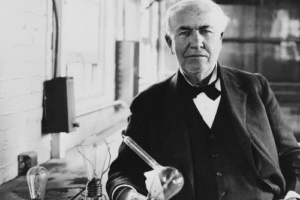The Reliance Dahanu Thermal Power Station is a major power plant located in Dahanu, a coastal town in the Palghar District of Maharashtra, India. The power station is notable for several reasons, including its tallest reinforced cement concrete (RCC) chimney in India, which stands as a remarkable engineering achievement.
The chimney at the Reliance Dahanu Thermal Power Station is 275.2 meters (903 feet) high, making it the tallest RCC chimney in India.
The chimney’s height is a notable engineering feat as it was designed to handle the large amounts of gases generated by the thermal power plant, ensuring efficient dispersal of emissions at high altitudes to reduce air pollution.
The base diameter of the chimney is 7 meters (23 feet), contributing to its structural stability and ability to withstand the forces generated during operation.
The Reliance Dahanu Thermal Power Station was developed by Reliance Power, a part of the Reliance Group of companies.
It is one of the largest thermal power plants in Maharashtra and plays an essential role in supplying electricity to the state and surrounding regions.
The power station has a total installed capacity of 500 MW (megawatts), which is produced from its coal-fired units.
The tall chimney is part of the plant’s efforts to minimize environmental impact. By venting gases at a higher altitude, the chimney helps to reduce the concentration of harmful emissions near the ground, thereby reducing the potential for local air pollution.
The thermal power station also uses modern technology to improve its efficiency and minimize the environmental footprint of its operations.
The Reliance Dahanu Thermal Power Station’s chimney is a landmark not just in terms of its height but also in terms of its design and construction. It is a testament to the capabilities of Indian engineers and the progress made in the field of thermal power generation and infrastructure.
The chimney was constructed using reinforced cement concrete (RCC), a durable and strong material that provides the necessary strength to withstand wind forces, thermal stresses, and the impact of continuous operation.
The power station is strategically located in Dahanu, which is close to the western coast of India. This location is ideal for transporting coal by sea and offers proximity to the Mumbai metropolitan region, which is one of the largest consumers of electricity in India.
The coastal location also ensures that the power station can access essential resources like water for cooling purposes, which is vital for its operations.
The Reliance Dahanu Thermal Power Station is a significant source of electricity generation for Maharashtra and surrounding areas. It supports industrial growth, urbanization, and infrastructure development by providing reliable power.
The power station also plays a role in economic development by supplying electricity to homes, businesses, and factories, contributing to the overall prosperity of the region.
Like many other thermal power plants, the Reliance Dahanu Thermal Power Station faces challenges related to environmental sustainability. Efforts have been made to reduce emissions, including installing pollution control technologies and following guidelines set by regulatory authorities.
The plant has been working to comply with environmental standards to balance electricity generation with the protection of the surrounding ecosystem.
The tall RCC chimney serves as a key structural feature of the thermal power station. It is a symbol of modern industrial capabilities in India and an example of engineering excellence in the energy sector.
The chimney has become a regional landmark, visible from a significant distance, and is often cited as an example of large-scale industrial infrastructure in India.
The Reliance Dahanu Thermal Power Station and its 275.2-meter tall chimney stand as a significant milestone in India’s energy infrastructure. The chimney itself is an engineering marvel, and the station’s contribution to power generation and economic development in Maharashtra cannot be overstated. As one of the largest and most modern thermal power stations in India, it plays a vital role in meeting the country’s growing energy demands while working toward minimizing environmental impacts.







